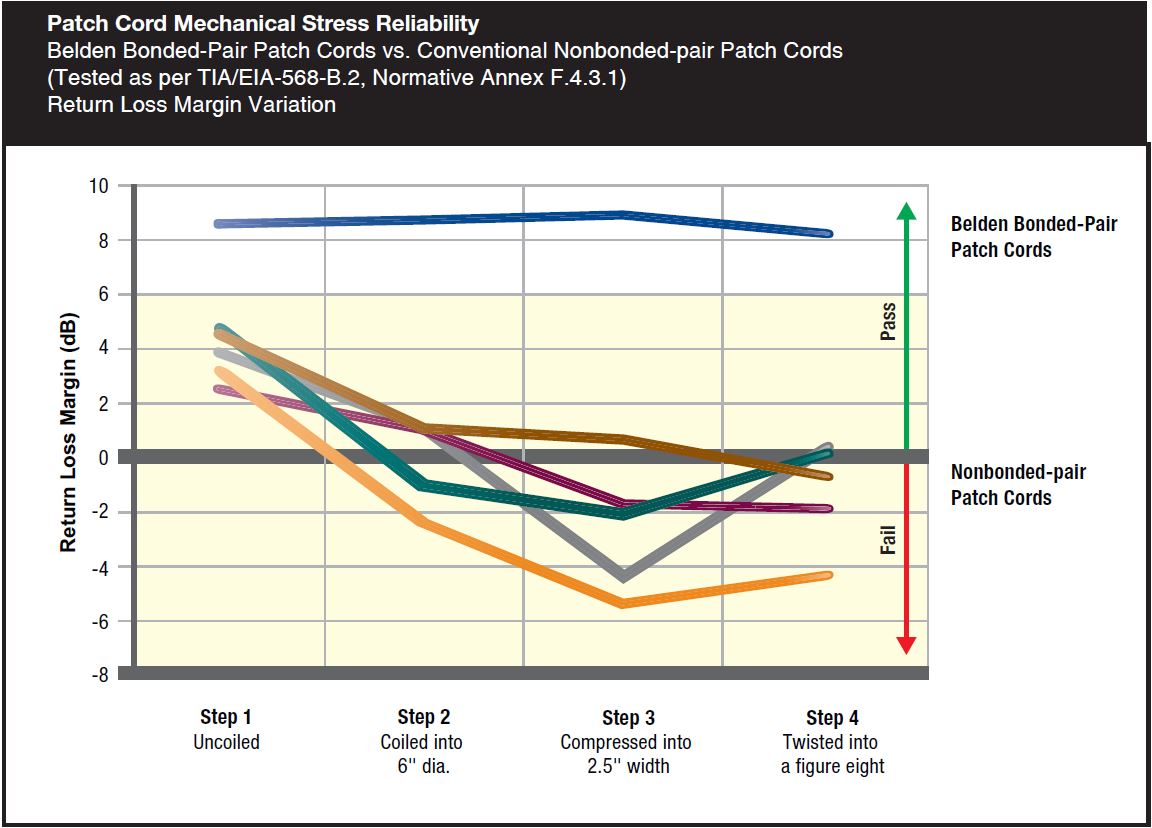Bonded-Pair Patch Cords: Your Front Line of Defense
This week we have a post from a guest blogger! Greg Deitz is a Networking Cable Product Manager for Belden.
Frequently squeezed and bent during installation and routinely manipulated by IT personnel, patch cords are often viewed as one of the most replaceable, commoditized components in the data center.
But as the primary connection for servers in the data center and switches in the LAN, patch cords are the front line of defense against downtime.
Since a cable channel is only as good as the weakest link, you might want to give your patch cords a little more attention.
Stranded vs. Solid
One of the most common questions is whether to use solid or stranded conductors for patch cords. Solid conductors are comprised of a single solid piece of copper, while stranded conductors are made up of multiple smaller copper strands wrapped around each other. Stranded conductors used in category cabling are often comprised of six-around-one for a total of seven strands per conductor that result in an overall diameter that is about the same as a solid conductor.
Solid conductors offer overall better attenuation and lower DC resistance over stranded conductors. As we move to higher frequencies and the higher power of PoE Plus, solid conductors are much better able to support today’s higher data rates and increased power. They are a must for horizontal cable runs in the LAN—higher attenuation renders stranded cable insufficient for any run greater than about 10 meters.
On the other hand, stranded conductors are considered more flexible than solid conductors and therefore are often used for patch cords where the higher attenuation is not as much of a concern due to the shorter lengths.
But what if you could get the best of both worlds—the flexibility of a stranded conductor with the performance of a solid? You can with Bonded-Pair technology.
Bonded vs. Non-bonded
Bonded-Pair cables feature individual solid conductors that are bonded along their longitudinal axis to provide extremely uniform spacing within each pair for consistent electrical performance. On the other hand, installation and manipulation of non-bonded pairs tends to cause gaps between the conductors that can adversely impact electrical performance. These gaps can occur in both non-bonded solid and stranded conductors. At patch panels where patch cords are subjected to ongoing bending and stress, non-bonded pairs can significantly degrade over time.

One of the great things about Bonded-Pair cables is that they offer higher maximum pulling tensions and tighter bend radii over other paired cables, maintaining their physical integrity even in a patch cord that undergoes the stresses of installation and constant manipulation. In fact, Bonded-Pair patch cords are the only patch cords on the market that pass TIA’s stringent mechanical stress test.
What does this mean for you?
It means you get the flexibility of a stranded patch cord with the performance of a solid conductor. It means you don’t have to worry about patch cord length and attenuation. And with today’s higher frequency applications and higher PoE Plus wattage, it means no longer having the entire network performance hinge on an unstable component’s performance like that of a low-quality patch cord.
A Bonded-Pair patch cord is truly your best line of defense.
